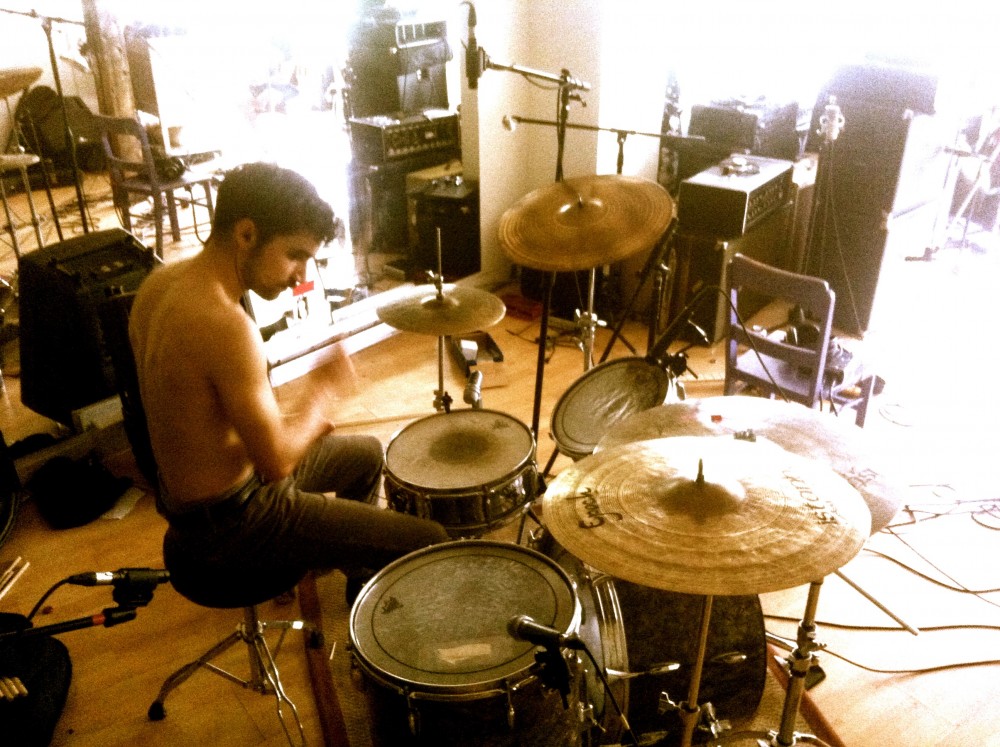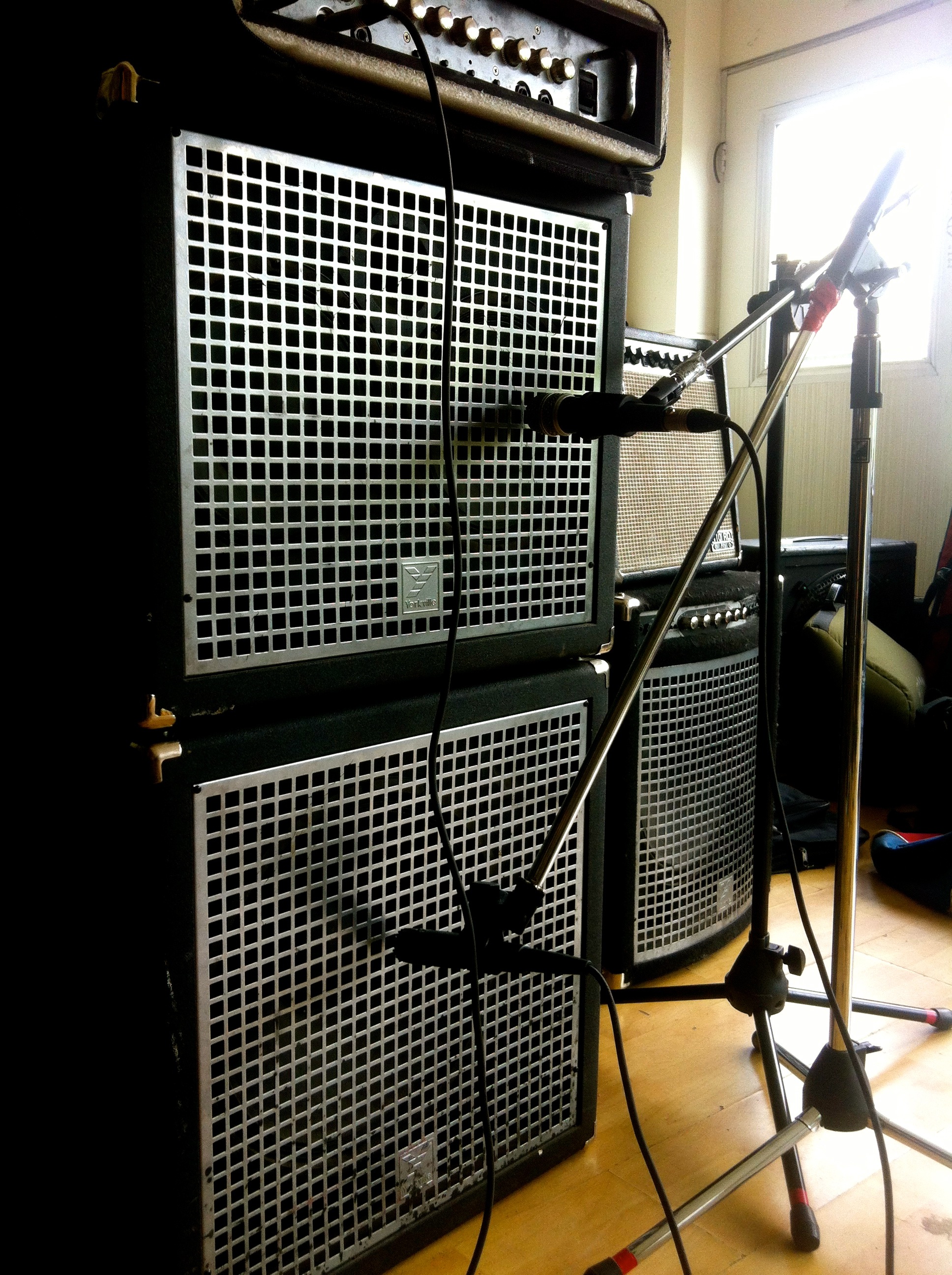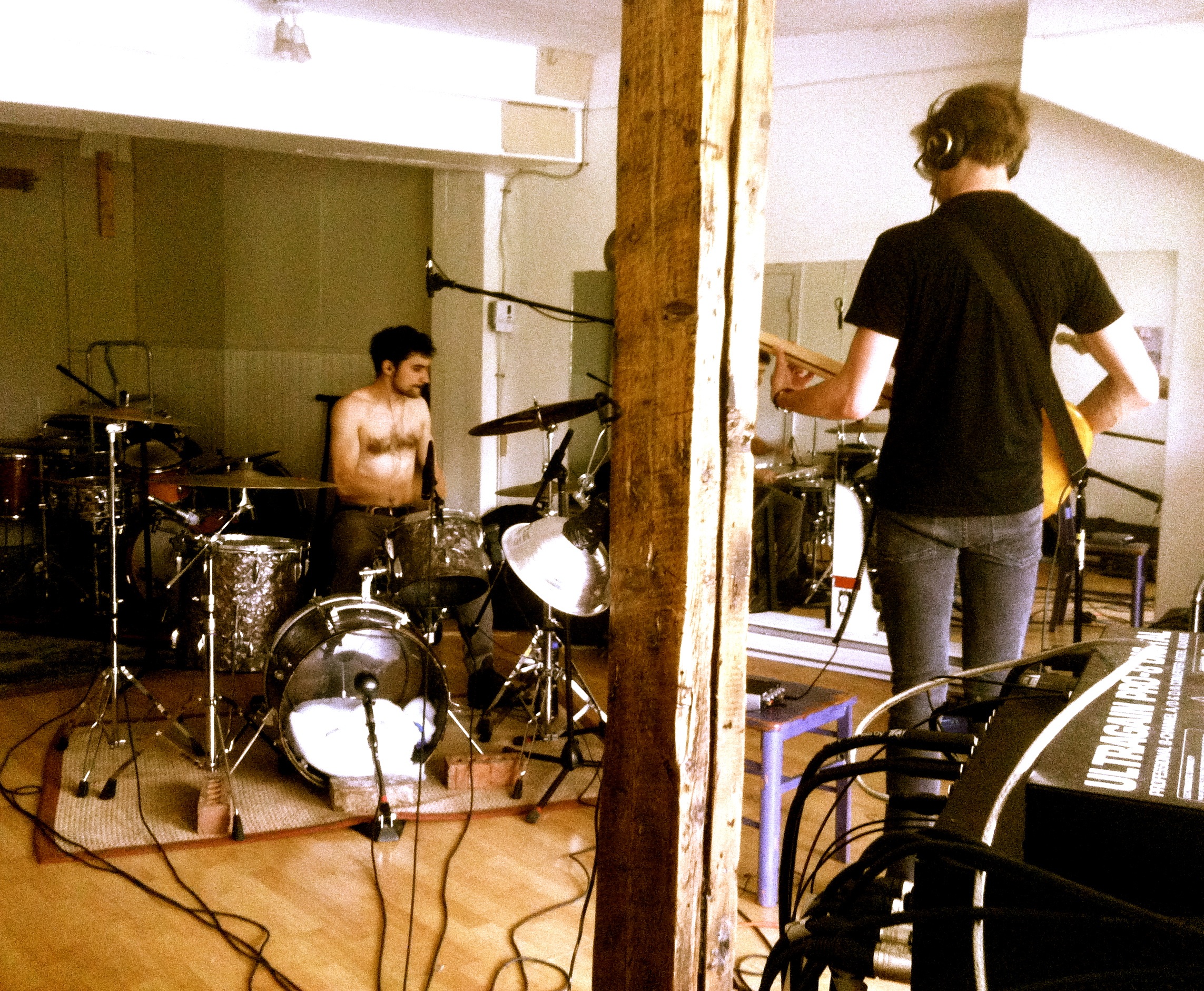
More Debt! Part 2 – Drums and Bass
Cutting a full length album in a weekend isn’t an easy task, but both myself and Montréal rock band Debt were up for the challenge.
This is Part 2 of a series on the experience. If you missed it, check out Part 1 right here!
Deadly Drums
Getting set up on the first day, we all agreed we wanted to take our time getting tones. No one wanted to rush the process, and we’d all seen (and heard!) what a huge difference a little bit of patience can make.
First thing first, we started with the Snare.
By taking care to position it correctly in the room, we could be confident that perhaps the most central element to any rock mix would be clear, bold, and authoritative. Even a few inches can make a dramatic difference, so we made sure to try out numerous positions before we picked one. In the end, everyone agreed on the sweet spot, and we moved on.
Next, we kept the kick in check by making sure it was oriented for the most low-end thump the room had to offer. When dealing with drums, I’m always careful of being too close to reflective surfaces, too close to the centre of parallel surfaces (also known as the standing wave Danger Zone), and too perpendicular to walls. With all these things in mind, we selected an angle for the kick drum and built the rest of the kit around the Kick and Snare.
Once everything was put in place, the snare had plenty of CRACK, the kick was big and beefy, and the toms had plenty of punch.
Step one was a success!
The next task was to actually put mics on the thing!
Since the room was on the smallish side, I mic’d every drum on the kit separately, included a bottom snare mic for extra top end, and used the Recorderman overhead setup. We payed close attention to the phase relationships between mics, and after some careful testing, we were all very pleased with the results. Add in a pair of room mics, each facing opposite sides of the kit, and we were good to go!
Beastly Bass
Plenty of engineers will tell you that DI is the way to go for bass guitar, but I’m of a different school, myself. I think bass players choose their rigs carefully, and their choice of amps and speakers should be represented on their recordings.
Thus, I’m a bass amp kind of a guy.

We oriented the amplifier in the room so as not to cause too many bass interference issues, especially with the kick drum. Generally speaking, much more sound comes out of the front and back of a speaker cabinet than comes out the sides, and we used this fact strategically to our advantage. Next, we settled on a volume level that provided a balance between bass bleed in the drum mics, drum bleed in the bass mics, and didn’t make the walls, ceiling, floor, windows, and every other part of the room shake, rattle, or roll.
Alright: So we were happy with the sounds of the instruments in the room.
We were happy with the mic set up and tonal balance.
All that was left was for the band to play all their songs, perfectly, in a row.
Easy.
As always, my job is made infinitely easier by musicians who bring the proverbial “rock”.
